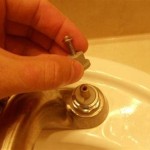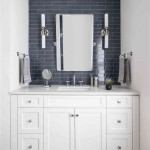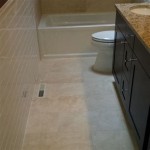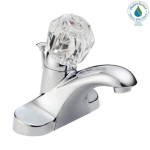Why Are There So Many Gnats in the Bathroom?
The presence of gnats in the bathroom can be a frustrating and unsanitary experience. These tiny flies are attracted to moisture, and bathrooms, with their frequent exposure to water and dampness, can provide a breeding ground for these pesky insects. While they may seem harmless, gnats can spread bacteria and create a unpleasant environment. Understanding why gnats are drawn to bathrooms and identifying the sources of their infestation is crucial in effectively controlling their population.
Moisture: The Gnats' Prime Attraction
Gnats, particularly drain flies and fungus gnats, thrive in damp environments. Bathrooms, often characterized by frequent showering, bathing, and sink use, provide the ideal moisture conditions for these insects. Water droplets, condensation, and humidity create favorable breeding grounds for gnats. Their larvae feed on organic matter, like mold, mildew, and decaying vegetation found in damp areas. Bathrooms, with their constant exposure to water and potential for moisture buildup, inadvertently create a welcoming habitat for gnats.
Standing Water: A Breeding Ground for Gnats
Standing water, a common occurrence in bathrooms, is a primary source of gnat infestations. Water left in sinks, drains, and tubs provides an ideal environment for gnat eggs to hatch and larvae to develop. When water stagnates for extended periods, it becomes a breeding ground for gnats. Even a small amount of standing water can attract and sustain a significant gnat population. The longer the water remains undisturbed, the greater the likelihood of gnat infestation.
Organic Matter: Food for Gnat Larvae
Bathroom drains and traps often accumulate organic matter, including hair, soap residue, and food debris. These materials provide a rich source of nutrients for gnat larvae. As these organic materials decompose, they produce a favorable environment for gnat reproduction. Cleaning and maintaining bathroom drains and traps is essential in minimizing the availability of food sources for gnat larvae.
Other Factors Contributing to Gnat Infestations
Beyond moisture and organic matter, other factors can contribute to gnat infestations in bathrooms. Poor ventilation, including insufficient air circulation, can trap moisture and create a conducive environment for gnats. Similarly, cracks and crevices in bathroom walls and floors can harbor gnat eggs and provide them with shelter. Finally, even the seemingly harmless act of leaving a window open for extended periods can introduce gnats into the bathroom.
Effective Gnat Control Strategies
Controlling gnat infestations in the bathroom requires a multi-pronged approach. Regularly cleaning and disinfecting bathroom surfaces, particularly drains and sinks, is essential to remove food sources for gnat larvae. Ensuring proper ventilation and eliminating standing water are crucial steps in preventing gnat breeding. Using a natural repellent such as vinegar or peppermint oil can also deter gnats. If the infestation persists, professional pest control services may be necessary to effectively eradicate the gnat population.
How To Get Rid Of Gnats Drain Flies Fruit And Fungus
Jab Plumbing Solutions Blog Blocked Drain Plumbers

Fruit Flies In The Bathroom Get Rid Of Them Michael S Plumbing Orlando

The Simple Trick To Stop Pesky Gnats From Taking Over Your Drains
We Are Seeing Small Flies In Our Bathroom Any Idea What Could Be Causing Them To Show Up Quora

How To Get Rid Of Drain Flies

How To Rid Of Drain Flies Forbes Home

Identify Tiny Bugs In Bathroom And Get Rid Of Them For Good

Gnats In Basement Doityourself Com Community Forums

Fungus Gnats Doityourself Com Community Forums
Related Posts







